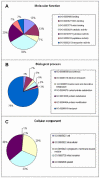An EST database from saffron stigmas
- PMID: 17925031
- PMCID: PMC2221943
- DOI: 10.1186/1471-2229-7-53
An EST database from saffron stigmas
Abstract
Background: Saffron (Crocus sativus L., Iridaceae) flowers have been used as a spice and medicinal plant ever since the Greek-Minoan civilization. The edible part - the stigmas - are commonly considered the most expensive spice in the world and are the site of a peculiar secondary metabolism, responsible for the characteristic color and flavor of saffron.
Results: We produced 6,603 high quality Expressed Sequence Tags (ESTs) from a saffron stigma cDNA library. This collection is accessible and searchable through the Saffron Genes database http://www.saffrongenes.org. The ESTs have been grouped into 1,893 Clusters, each corresponding to a different expressed gene, and annotated. The complete set of raw EST sequences, as well as of their electopherograms, are maintained in the database, allowing users to investigate sequence qualities and EST structural features (vector contamination, repeat regions). The saffron stigma transcriptome contains a series of interesting sequences (putative sex determination genes, lipid and carotenoid metabolism enzymes, transcription factors).
Conclusion: The Saffron Genes database represents the first reference collection for the genomics of Iridaceae, for the molecular biology of stigma biogenesis, as well as for the metabolic pathways underlying saffron secondary metabolism.
Figures




References
-
- Fernandez JA. Biology, biotechnology and biomedicine of saffron. Recent Res Devel Plant Sci. 2004;2:127–159.
-
- Ewing B, Hillier L, Wendl MC, Green P. Base-calling of automated sequencer traces using phred. I. Accuracy assessment. Genome Res. 1998;8:175–185. - PubMed
Publication types
MeSH terms
Substances
LinkOut - more resources
Full Text Sources
Other Literature Sources
Research Materials

